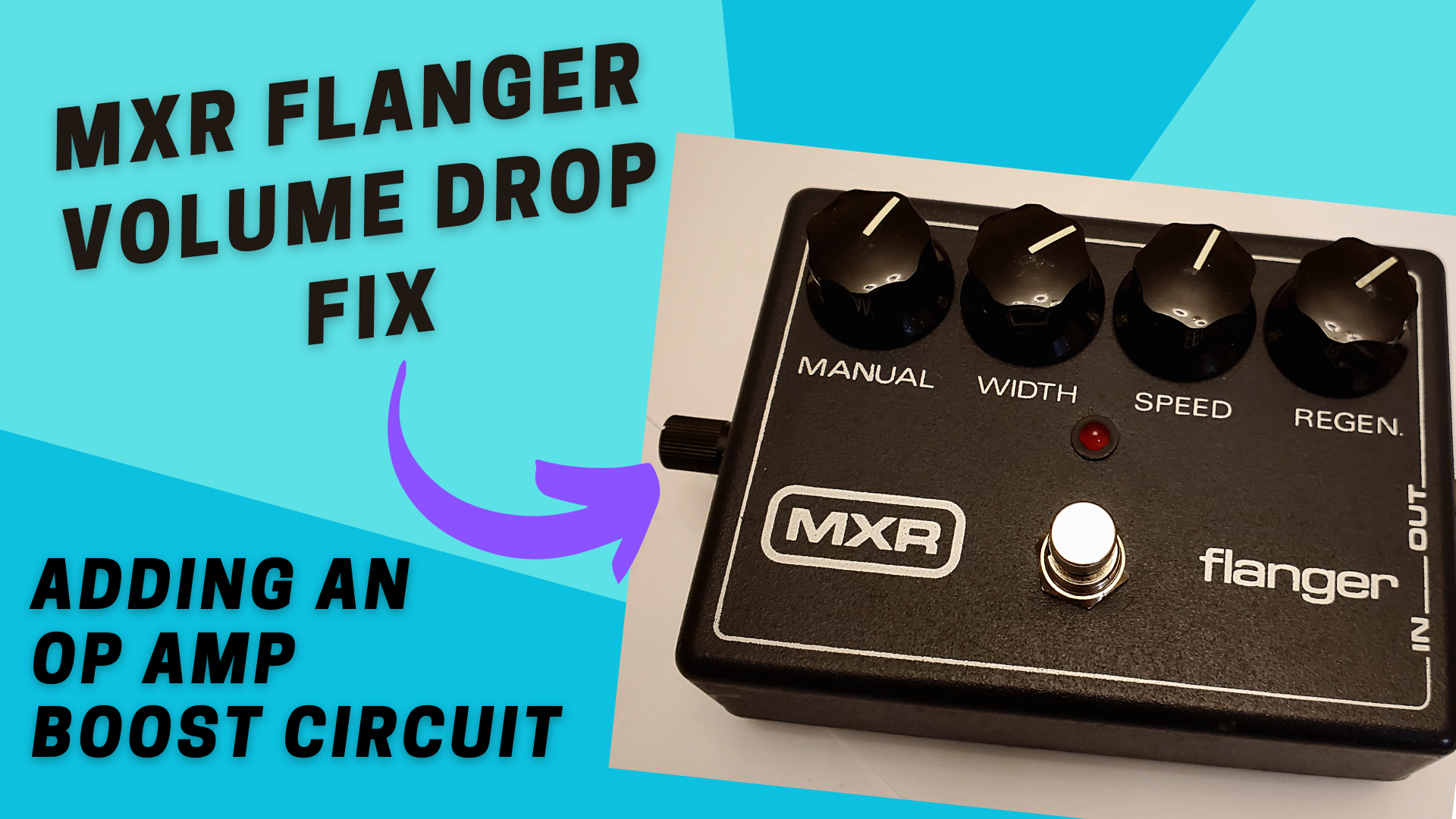Unlocking Your Sound: A Deep Look At The MXR Mod List
There is a real satisfaction that comes from making your gear truly your own, shaping the sound just how you like it. For many musicians, that means looking at what is possible beyond the factory settings of their effects pedals. That is where an mxr mod list can be very helpful, offering pathways to new sonic adventures.
MXR pedals, known for their solid build and classic tones, are quite popular. But even a great pedal, like perhaps the Mxr carbon copy delay (se aurora) that someone might have posted for sale on Wed Dec 18 2024 at 2:20 pm, could be made even better for a particular player. A lot of folks want to get a little more out of their tools, you know, to really dial in something special.
This article will go into the various ways you can change your MXR pedals. We will look at why people do this, the different kinds of changes you can make, and what you might want to consider before you start. It is about getting that sound you hear in your head, so, it is almost a personal quest.
Table of Contents
- Why Think About an MXR Mod List?
- Common Types of Pedal Changes
- Looking at Popular MXR Pedals for Mods
- Things to Know Before You Start
- Frequently Asked Questions About Pedal Changes
- Your Sound, Your Choice
Why Think About an MXR Mod List?
People look at an mxr mod list for many reasons. Sometimes, a player wants a pedal to do something it does not quite do out of the box. Maybe they need a little more gain, or a different kind of sustain. It is about fine-tuning, you know, getting that perfect feel.
Another big reason is to make a pedal better in some way. Perhaps a certain older MXR pedal loses a bit of its signal when it is off. A change could fix that. Or, maybe someone wants a specific part of the sound to be warmer, or perhaps brighter. It is a way to personalize your gear, so, it is very much about individual taste.
For some, it is also a creative outlet. Building or changing something with your own hands can be very satisfying. It is a way to connect with your equipment on a deeper level. Plus, it can be a cost-effective way to get a "boutique" sound without buying a whole new, expensive pedal, that is a real plus for many.
Common Types of Pedal Changes
When you start looking at an mxr mod list, you will find several common types of changes that people make. These often aim to improve sound, function, or both. Knowing these categories helps you figure out what kind of change might be right for your pedal, and stuff.
True Bypass Changes
Many older pedals, and some newer ones, are not "true bypass." This means when the pedal is off, your guitar signal still goes through some of the pedal's parts. This can slightly change your tone, even when the effect is not on. A true bypass change makes sure your signal goes straight through when the pedal is off, keeping your original tone. This is a very popular change for those who are serious about their signal chain, you know.
Tone Shaping Changes
These changes are all about altering the actual sound of the effect. This could mean changing how much distortion a pedal makes, or how long a delay repeats. It might involve swapping out certain small parts, like resistors or capacitors, to adjust frequencies. For example, you might want a delay to be darker, or a drive pedal to have more low end. It is about sculpting the sound, basically.
Component Upgrades
Sometimes, the parts inside a pedal are good, but they could be better. Upgrading certain components, like op-amps or capacitors, can improve the clarity, dynamic range, or overall sound quality. This is a subtle change often, but it can make a noticeable difference to discerning ears. It is like putting better tires on a car, you know, the ride just feels better.
Power and Noise Reductions
Some pedals can be a bit noisy, especially at higher gain settings. Changes can be made to improve power filtering or reduce unwanted hum. This helps keep your signal clean and clear. It is a bit like cleaning up the background noise in a recording. A quiet pedal is often a happy pedal, right?
Looking at Popular MXR Pedals for Mods
MXR has made many pedals over the years that people love to change. Their solid design often makes them good candidates for these kinds of projects. We will look at a very popular one, and then mention a few others, too it's almost a given.
The MXR Carbon Copy Delay and Its Possibilities
The MXR Carbon Copy Delay is a very well-loved analog delay pedal. It is known for its warm, dark repeats. The reference text mentions an "Mxr carbon copy delay (se aurora) $80 posted by, Sale 7830998690 wed dec 18 2024 2:20 pm." This specific mention suggests that even popular, special edition pedals can be subjects of interest for changes. While the Carbon Copy is great as it is, some players do look for ways to tweak it.
For a Carbon Copy, common changes might include:
- More modulation control: Some people wish they had more ways to adjust the built-in modulation. Changes can add external controls for speed or depth.
- Brighter repeats: The Carbon Copy is dark by design. Some players might want brighter, more defined repeats, which can be done by changing certain parts inside.
- Extended delay time: While it has a good range, some might want even longer delay times for ambient sounds. This is a more involved change, usually.
- True bypass: Though newer Carbon Copies are often true bypass, older versions might benefit from this update.
These changes allow a player to fine-tune the pedal to their specific needs. It is about making a great pedal even more personal, you know. It's really about what you want to hear.
Other MXR Pedals to Consider
Beyond the Carbon Copy, many other MXR pedals are popular for changes:
- MXR Phase 90: A classic phaser. Common changes include adding a mix control, a feedback control, or making it true bypass. Some like to change the specific sound of the phase effect, too.
- MXR Micro Amp: This is a simple clean boost. People often change it to add more gain, or to make it a dirtier boost. Some also add a tone control to shape the boosted sound.
- MXR Dyna Comp: A very famous compressor. Changes often focus on making it less noisy, or changing the compression characteristics to be smoother or more aggressive.
- MXR Distortion+ / OD+ : These older dirt pedals are often changed to have more output, different clipping sounds, or a wider range of gain. It is about getting a specific dirt tone.
Each of these pedals has a community of people who enjoy exploring ways to make them unique. It is a testament to their basic design that they are so adaptable, actually.
Things to Know Before You Start
Before you get excited and start looking for parts for your , there are a few important things to keep in mind. Changing pedals involves working with small parts and sometimes soldering. It is not something to rush into, you know.
Skill Level and Tools
Some changes are simple, like swapping a chip. Others are much harder, requiring good soldering skills and an understanding of electronics. Be honest with yourself about your skill level. If you are new to this, start with something easy. You will need basic tools like a soldering iron, solder, wire cutters, and perhaps a multimeter. Safety glasses are also a very good idea, obviously.
Getting Parts
Finding the right parts is key. There are many online stores that sell electronic components specifically for pedal building and changing. Make sure you get quality parts. Some changes might require specific values for resistors or capacitors. Doing a bit of research on reputable suppliers is smart. For example, you might look at a site like Mammoth Electronics for parts, or similar places.
Warranty Concerns
It is important to know that changing your pedal will almost certainly void its warranty. If something goes wrong after you change it, the company will not fix it for free. This is a risk you take when you open up the pedal. For an older pedal, like one from a sale back on Wed Dec 18 2024, this might not be a big deal since the warranty is probably gone anyway. But for a new one, consider this carefully, you know, before you pick up that iron.
Frequently Asked Questions About Pedal Changes
Many people have similar questions when they first think about changing their pedals. Here are a few common ones, basically.
Is it hard to change a pedal?
It really depends on the specific change you want to make. Some, like changing an LED, are quite simple. Others, like adding new circuits or multiple switches, can be quite complex. Starting with simpler projects is a good way to build skill and confidence, you know, before tackling bigger ones.
What are common changes for delay pedals?
For delay pedals, common changes often involve tweaking the tone of the repeats (making them brighter or darker), adding more modulation control, or sometimes extending the delay time. Some people also look to improve the clarity or reduce noise in the repeats. It is about fine-tuning the echo, really.
Does changing a pedal affect its value?
This is a bit tricky. For some very rare or vintage pedals, any change can lower its value to collectors. For more common pedals, a well-done, popular change might increase its value to certain players, but it could also make it harder to sell to others who want it original. It is usually best to assume it will not increase the value, or might even decrease it, for a general sale. For a specific sale, like the Mxr carbon copy delay (se aurora) that was posted, it would depend on what the buyer wants, obviously.
Your Sound, Your Choice
Looking through an mxr mod list is a way to think about personalizing your sound. Whether you want to fix a small issue, get a unique tone, or just enjoy the process of making something your own, pedal changes offer a lot of possibilities. It is about making your gear work for you, very specifically. So, you know, consider what you want to achieve.

MXR Flanger Volume Drop Fix: Adding an Op Amp Boost Circuit

MXR Phase 100 repair and mod | i@like.audio

Mxr Skyrim Mod List 2025 - Barbara Li